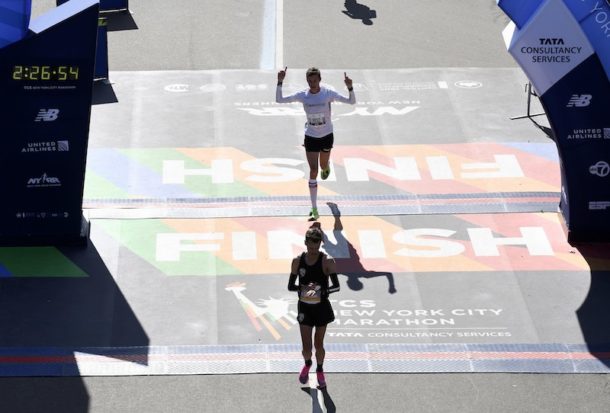
The marathon is a legendary race that inspires many athletes. No matter which marathon you prepare for, the marathon distance is always 26.2 miles (42.195 km). Why, you might ask? Let’s travel to Greece and then England to solve this mystery.
Contents
Marathon legend dates back to ancient greece
The story of the Greek messenger Pheidippides might sound familiar to you. During the first Persian War (490 BC), the Greeks defeated the Persians at the Battle of Marathon. The messenger Pheidippides is said to have run about 25 miles (40 km) from the city of Marathon to Athens to announce the Greek victory. After this heroic effort, he supposedly died of exhaustion just after delivering his message.
The organizers of the first modern Olympic Games in 1896 decided to create the marathon distance in honor of Pheidippides. The distance was then 25 miles (40 km), and like all the events of these first Games, it was strictly reserved for men.
The Marathon distance revised by the English
The Olympic Games in 1908 were held in London. The organizers were free to set the exact distance of the marathon. They chose for the race to start at Windsor Castle and finish at White City Stadium. The marathon thus measured 26 miles (41.843 km).
The original route was supposed to bring the runners through the royal entrance of the stadium and have them finish in the direction of the track. Following a last-minute change, the stadium entrance became unusable, and the runners had to enter from the opposite side and finish counterclockwise, right in front of King Edward VII’s royal box and the British royal family.
As a result, an additional 385 yards (351 meters) were added to the course of the 1908 London Marathon. The distance then became: 26 miles and 385 yards (42.195 km).
These extra meters proved too much for the leading marathon runner, the Italian Dorando Pietri. On that hot and humid July day, he collapsed five times in the final lap. Officials helped him cross the last few meters. He crossed the finish line first but was disqualified for receiving unauthorized assistance, even though he didn’t ask for it. The following day, Queen Alexandra awarded him a special gold or silver cup in recognition of his effort.
The distance of the London Marathon for reference
The marathon distance varied between 25 miles (40 km) and 26.5 miles (42.75 km) at the discretion of each organizer. After long debates, the International Association of Athletics Federations (IAAF) decided to set an official distance for all marathons. Starting in 1921, the official marathon distance was established as 26.2 miles (42.195 km), likely in honor of the memorable 1908 London race.
Since 1921, every marathon has been 26.2 miles (42.195 km). Note that the official measurement method (Jones counter) has a precision of 0.1%, and to ensure that marathon runners cover the full 26.2 miles (42.195 km), each course must be measured 42 meters longer, making it 26.2 miles and 42 meters (42.237 km). The course is measured twice, and even a third time after the race if a world record is set.
Whether you have a bib for the Paris Marathon, the New York Marathon, or the Boston Marathon and are preparing to run it in 4:30, 4:00, or even 3:00, the marathon distance will always be 26.2 miles (42.195 km).
What is 26.2 miles in kilometers – 26.2mi in km
26.2 miles is equivalent to approximately 42.195 kilometers. So, if you’re planning a marathon or just curious about the distance, that’s how far 26.2 miles translates into the metric system.
The half marathon distance in France is slightly longer than elsewhere in the world
As the name suggests, the half marathon is half of a marathon. The International Federation defines the half marathon distance as exactly 13.1 miles (21.097 km). However, the French Athletics Federation (FFA) rounds the half marathon distance to 21.100 km.
Thus, every half marathon in France measures 13.1 miles (21.1 km). The only exception is if it’s an international level half marathon, where the international rule prevails, and the half marathon then measures 13.1 miles (21.097 km). To reassure you, 3 meters is less than a second!
Here, the Jones counter must measure 13.1 miles and 21 meters (21.118 km) or 13.1 miles and 24 meters in France (21.121 km) from the start line to the finish line to ensure that all half marathon runners cover the distance.
Preparing for your first marathon ? Are you participating in a marathon soon? Prepare yourself with the RunMotion Coach app for a customized marathon training plan. Give yourself the best chance to become a finisher and achieve the time you aim for! 😉